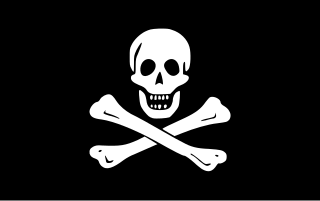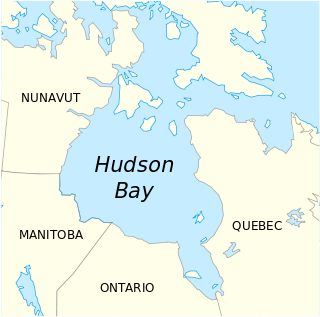
Piracy is an act of robbery or criminal violence by ship or boat-borne attackers upon another ship or a coastal area, typically with the goal of stealing cargo and other valuable items or properties. Those who engage in acts of piracy are called pirates. The earliest documented instances of piracy were in the 14th century BC, when the Sea Peoples, a group of ocean raiders, attacked the ships of the Aegean and Mediterranean civilizations. Narrow channels which funnel shipping into predictable routes have long created opportunities for piracy, as well as for privateering and commerce raiding. Historic examples include the waters of Gibraltar, the Strait of Malacca, Madagascar, the Gulf of Aden, and the English Channel, whose geographic structures facilitated pirate attacks. A land-based parallel is the ambushing of travelers by bandits and brigands in highways and mountain passes. Privateering uses similar methods to piracy, but the captain acts under orders of the state authorizing the capture of merchant ships belonging to an enemy nation, making it a legitimate form of war-like activity by non-state actors.

Christopher Condent, born in Plymouth in Devon, was an English pirate who led the return to the Eastern Seas.
Robert Culliford was an English pirate from Cornwall who is best remembered for repeatedly checking the designs of Captain William Kidd.

Kanhoji Angre was the Chief of the Maratha Navy in 18th century India. In historical records, he is also known as Conajee Angria or Sarkhel Angré.

The Golden Age of Piracy is a common designation given to usually one or more outbursts of piracy in the maritime history of the early modern period. In its broadest accepted definition, the Golden Age of Piracy spans the 1650s to the late 1720s and covers three separate outbursts of piracy:
- The buccaneering period of approximately 1650 to 1680, characterized by Anglo-French seamen based on Jamaica and Tortuga attacking Spanish colonies and shipping in the Caribbean and eastern Pacific
- The Pirate Round of the 1690s, associated with long-distance voyages from the Americas to rob Muslim and East India Company targets in the Indian Ocean and Red Sea
- The post-Spanish Succession period extending from 1716 to 1726, when Anglo-American sailors and privateers, left unemployed by the end of the War of the Spanish Succession, turned en masse to piracy in the Caribbean, the North American eastern seaboard, the West African coast, and the Indian Ocean

Suvarnadurg is a fort that is located between Mumbai and Goa on a small island in the Arabian Sea, near Harnai in Konkan, along the West Coast of India, in the Indian state of Maharashtra. The fort also includes another small land fort called the Kanakadurga at the base of headland of Harnai port on the coast. Building of the fort is credited to Shivaji Maharaj, founder of the Maratha Empire, in 1660. Subsequently, Shivaji, other Peshwas and the Angres further fortified the forts for defence purposes.
Captain Samuel Burgess was a member of Captain William Kidd's crew in 1690 when the Blessed William was seized by Robert Culliford and some of the crew, with William May named as Captain.
Edward Coates was a colonial American privateer in English service during the King William's War and later a pirate operating in the Red Sea and Indian Ocean during the mid-1690s.

John Halsey was a British privateer and a later pirate who was active in the Atlantic and Indian Oceans during the early 18th century. Although much of his life and career is unknown, he is recorded in A General History of the Pyrates which states "He was brave in his Person, courteous to all his Prisoners, lived beloved, and died regretted by his own People. His Grave was made in a garden of watermelons, and fenced in with Palisades to prevent his being rooted up by wild Hogs."

Nathaniel North was a Bermuda-born pirate during the Golden Age of Piracy, operating in the Indian Ocean under John Bowen and then as captain of the Defiant following Bowen's retirement in 1704. After losing the Defiant he ruled a pirate colony at Ambonaivo made up of his former crew before returning to sea. Retiring with great wealth in 1709, North settled in Madagascar and married a local woman, but was murdered by her family.
John Nutt was a 17th-century English pirate. He was one of the more notorious brigands of his time raiding the coast of southern Canada and western England for over three years before his capture by Sir John Eliot in 1623. His arrest and conviction caused a scandal in the English court, after Nutt paid Eliot £500 in exchange for a pardon, and was eventually released by Secretary of State George Calvert.

Khanderi is an island with a fort, located south of Mumbai, along the coast of Maharashtra, India.

Vijaydurg, the oldest fort on the Sindhudurg coast, was constructed during the regime of Raja Bhoja II of the Shilahar dynasty and restructured by Shivaji Maharaj.

The Republic of Pirates is the nomenclature for the base or stronghold of a loose confederacy run by privateers-turned-pirates in Nassau on New Providence island in the Bahamas for about eleven years from 1706 until 1718. Although not a state or republic in a formal sense, it was governed by its own informal 'Code of Conduct'. The activities of the pirates caused havoc with trade and shipping in the West Indies, until governor Woodes Rogers reached Nassau in 1718 and restored the British control.

The Maratha Navy refers to the naval wing of the armed forces of the Maratha Empire, which existed from around mid-17th century to mid-18th century in India.
John Hoar was a pirate and privateer active in the late 1690s in the Red Sea area.














